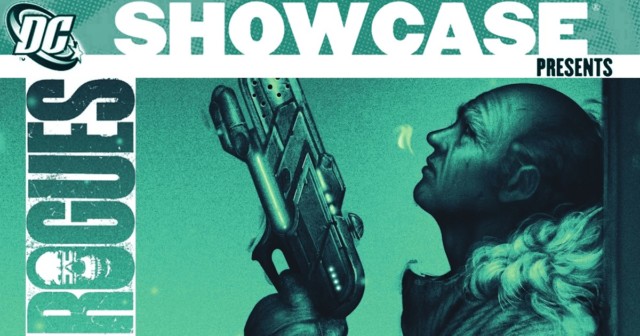DC Showcase: ‘The Flash: Terminal Velocity’ Comic Review
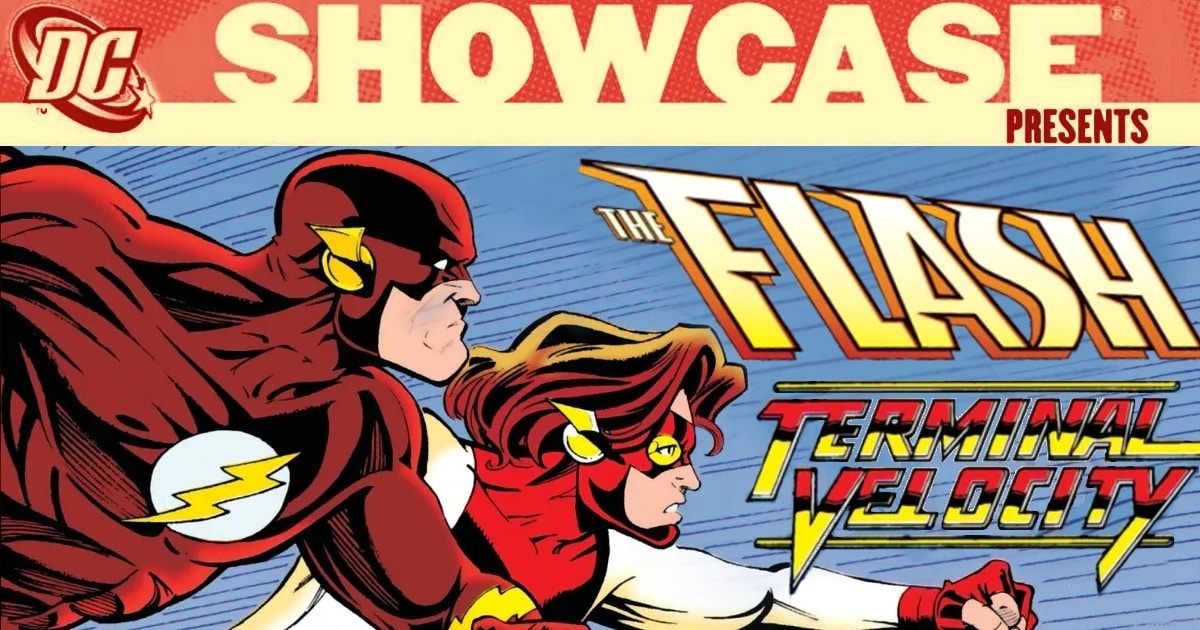
The Flash: Terminal Velocity is one of the most beloved story arcs in Mark Waid’s groundbreaking 100-issue run on The Flash. The 6-issue arc is not only one of the most important Flash stories ever, but also an unforgettably emotional powerhouse.
The story stars Wally West as The Flash after the death of Barry Allen. Waid started his run with Flash (1987) #62, and Terminal Velocity takes place across Flash (1987) #95-100. Although it’s deep into Wally’s run, Terminal Velocity is friendly for new readers, especially fans of the Flash family in the animation and the Arrowverse.
Waid is a four time Eisner Award-winning writer with critically-acclaimed work on Flash, Daredevil, Fantastic Four, Captain America, and Superman. He co-created the Elseworlds line for DC’s stories set out of canon and is famous for his ability to synthesize classic silver age concepts with modern emotional gravitas. Terminal Velocity was also penciled by Salvador Larocca, who is an Eisner Award-winner himself and a regular artist for Marvel.
Mark Waid’s run on The Flash was so revolutionary that his Wally stories are often used as the inspiration for new stories with Barry Allen, in both comics and TV. So with the Flash finally heading to theaters soon, lets see how one of the greatest Flash stories of all time could influence the upcoming DC movie!
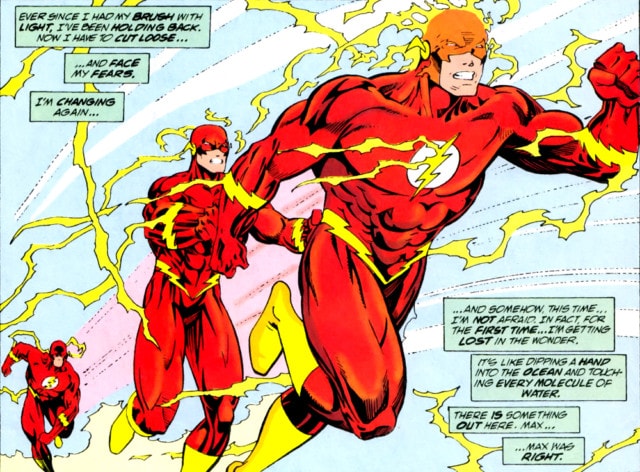
The story of The Flash: Terminal Velocity
Flash: Terminal Velocity is a romantic sci-fi thriller with terrifying real stakes. Mark Waid juggles genres while revolutionizing the Flash mythology with the formal introduction of the Speed Force, the origin of Max Mercury, and the debut of Bart Allen as Impulse.
Wally West returns from the timestream, shaken by a secret from the future and too scared to run fast. But in the words of Wally himself, “Time is the enemy” as the hidden meaning of the title starts to becomes clear and a ticking clock is set in motion.
The story begins with Wally West training the young Bart, a poor imitation of the way Barry Allen had trained Wally as Kid Flash. While the constant conflict between Wally and Bart quickly wears thin, this becomes a central part of the story as Bart undergoes his own arc in parallel to Wally.
At first I struggled with the comic, because the plot sets up a few predictable beats then drags out their reveals, and the villains are entirely uninteresting… But then I started to realize that none of that mattered. The true essence of Terminal Velocity is Wally learning to trust his team, trust himself, and trust his life partner Linda Park. As Wally goes through a crisis with his powers, Linda is his anchor to reality, and their relationship is the key to what makes this story so special.
Things really start to click into place in the last 2-3 issues of the arc. As the emotion and action intertwine, the story zips by so fast that Waid starts jumping between characters mid-sentence, leading to a rapid-pace adrenaline rush gut punch of a conclusion. Terminal Velocity might have a slow start, but it builds into one of the most powerful finales of any comic I’ve ever read.
The reason for its impact is that at its core, Terminal Velocity taps into the secret behind the greatest Flash epics: It’s a love story. For all their wacky rogues and incredible abilities, the throughline of the Flash saga has always been love. The story of Wally West is defined by his love for Linda Park, just as Barry Allen was defined by his love for Iris West. The generational family themes extend to Bart Allen, and even Johnny Quick and Jesse Quick. Flash stories have always been rooted in love and family, and few capture that as well as Terminal Velocity does.
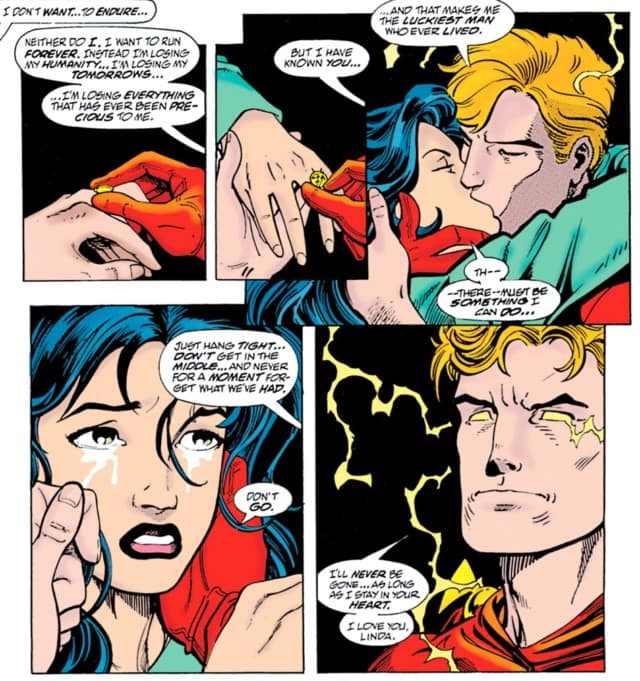
The visual style of Terminal Velocity
One of the biggest hurdles of Terminal Velocity for me was the art. I appreciate José Marzan’s detailed inks in the faces and speed-lines, but overall I didn’t find Salvador Larocca’s art as interesting as Mike Wieringo’s work from previous issues in the series. Especially in the early issues of Terminal Velocity, some of the giant 90s proportions were just too exaggerated for the grounded nature of Waid’s story. Similarly, I felt that Gina Going’s colors were a bit too light and pale for my liking in issues #95-96.
The art makes a noticeable improvement in issue #97 when Tom McCraw takes over the colors. He evolves Going’s coloring style to work in the book’s advantage for the intensely dramatic moments at the end of the arc. One of my favorite scenes in the story was an extended flashback sequence in issue #97 which McCraw colored in stunning black and white. There were a few other visually spectacular moments in the final two issues where the colors helped capture the mythic quality of the sci-fi action and heavy emotion in Waid’s script.
Nearly the entire story is lettered by comics legend Gaspar Saladino, who gives the comic a free flowing cartoon-style text and colorful action-heavy sound effects. Gaspar’s choice of style definitely dates the book as a product of the 90s, but the wild and joyful freedom in his lettering is definitely a treat to read.
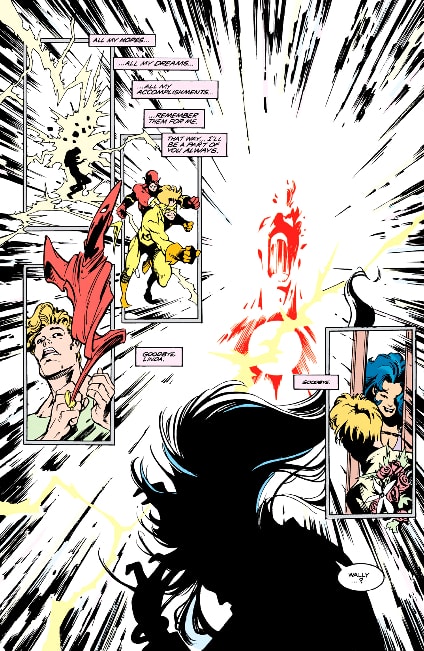
Is Terminal Velocity for new readers?
Despite starting with issue #95 of the second Flash series, Terminal Velocity is surprisingly easy to get into. New readers will have a few questions at first, but Waid naturally explains all the necessary details within the story itself. In general, the more you know about Flash lore, the better, and even being familiar with the characters from the Flash TV show might be enough.
Terminal Velocity picks up after the Zero Hour crossover, but you do NOT need to read that event to understand this story. Instead, I would recommend checking out Waid’s other work in The Flash: Born to Run and The Flash #0. While totally optional, these two comics help recap Wally West’s background and set the stage for Terminal Velocity.
- Recommended reading before The Flash: Terminal Velocity
- The Flash (1987) #62-65 (“Born to Run”)
- The Flash (1987) #92 (“Reckless Youth”, Bart Allen’s first appearance)
- The Flash (1987) #0 (“Flashing Back”)
- The Flash (1987) #95-100 (“Terminal Velocity”)
Terminal Velocity can be found in the 2018 trade collection The Flash by Mark Waid Book Four and the upcoming The Flash by Mark Waid Omnibus Vol. 2. After reading, I definitely recommend continuing his run with Wally. You can also check out Bart Allen’s solo series Impulse by Mark Waid, and find more Jay Garrick and Jesse Chambers in Geoff Johns’ JSA.

Adapting Terminal Velocity and Mark Waid’s Flash on screen
Of course you can find lots of great Wally content in DC’s TV series, like Justice League, Justice League Unlimited, Young Justice, and the Flash TV show. All of these adaptations build on the groundwork laid by Mark Waid’s run, especially Young Justice and The Flash, which both feature the Speed Force and various generations of the Flash family.
Terminal Velocity loosely inspired season 3 of The Flash TV show, and it’s easy to see how it could tie into the upcoming film as well. The importance of family, love, heroic sacrifices, and learning from reckless human decisions are crucial to Wally West’s growth as a character, and it seems like both the TV show and the films are adapting these qualities for their new stories with Barry Allen. That’s not even to mention the importance of the Speed Force, which Terminal Velocity introduced!
My verdict on The Flash: Terminal Velocity
Mark Waid’s Terminal Velocity is a foundational comic for the mythos of the Flash, but more than that, it’s just an incredible story. It really took me by surprise. I started underwhelmed, and I wasn’t impressed until halfway when everything suddenly started clicking. By the end of the arc, I was utterly enraptured in the drama of the characters.
Do not be deterred by the slow start of this comic! The Flash: Terminal Velocity is one of the most spectacular outings of Wally West, and the cornerstone for 30 years of Speed Force lore. The romance of Linda and Wally at the heart of this book is one of the most awe-inspiring love stories in DC comics history. If you’re excited for The Flash movie, if you loved The Flash show, and if you want to be inspired by redemption arcs, true love, and selfless heroism, then this is the comic for you.
Who is your favorite Flash? Are you excited the new movie? Let me know on Twitter @vinwriteswords and remember to follow the site @MyCosmicCircus for more comics coverage coming soon!
Check out our full list of DC comic reviews here, including our Flash-related reviews for Flashpoint and Rogues!
DC Showcase: Flashpoint
DC Showcase: Rogues


